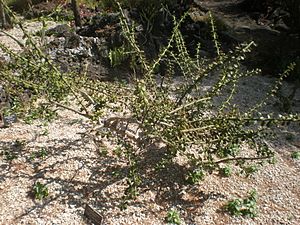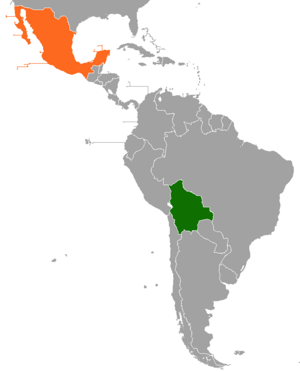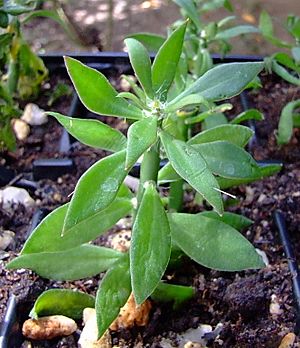Pereskiopsis diguetii facts for kids
Pereskiopsis diguetii is a unique type of cactus that belongs to the Opuntioideae subfamily. Unlike many cacti you might know, it has leaves, which makes it stand out! It is also known by its other name, Pereskiopsis spathulata. This interesting plant is native to parts of Bolivia and Mexico.
Quick facts for kids Pereskiopsis diguetii |
|
|---|---|
 |
|
| In the Jardín Botánico de la UNAM, México | |
| Conservation status | |
| Scientific classification | |
| Genus: |
Pereskiopsis
|
| Species: |
diguetii
|
 |
|
| Pereskiopsis diguetii is native to Bolivia and Mexico | |
| Synonyms | |
|
|
Contents
What is a Cactus?
Cacti are amazing plants known for living in dry places. Most cacti have spines instead of leaves. These spines help protect them and reduce water loss. Cacti are also famous for storing water in their stems. This allows them to survive in deserts and other arid environments.
The Opuntioideae Family
Pereskiopsis diguetii is part of the Opuntioideae subfamily. This group includes many well-known cacti. A common feature of these cacti is their areoles. Areoles are small, cushion-like areas on the plant. Spines, flowers, and new branches grow from these areoles.
Where Pereskiopsis diguetii Lives
This special cactus grows naturally in two countries. You can find it in parts of Bolivia in South America. It also lives in various regions of Mexico in North America. These areas often have dry climates, which cacti are well-suited for.
Habitat and Environment
Pereskiopsis diguetii prefers warm, dry environments. It often grows in rocky areas or dry forests. The plant is adapted to survive with little water. Its unique features help it thrive in these challenging conditions.
Appearance and Features
Pereskiopsis diguetii looks different from many other cacti. It has actual leaves, which is unusual for a cactus. These leaves are often flat and somewhat fleshy. The plant can grow into a shrub-like form.
Stems and Spines
The stems of Pereskiopsis diguetii are typically slender. Like other cacti, it has spines. These spines grow from the areoles on its stems. The spines help protect the plant from animals.
Flowers and Fruits
This cactus produces beautiful flowers. The flowers can be various colors, often yellow or orange. After the flowers bloom, they develop into small fruits. These fruits contain the seeds of the plant.
Life Cycle and Reproduction
The life cycle of Pereskiopsis diguetii begins with a seed. When conditions are right, the seed sprouts. It grows into a young plant, or seedling.
How it Reproduces
Pereskiopsis diguetii can reproduce in a few ways. It produces seeds from its flowers, which can grow into new plants. It can also reproduce from cuttings. A piece of the stem can be planted, and it will grow roots and become a new plant. This helps the species spread in its natural habitat.
Conservation Status
The conservation status of Pereskiopsis diguetii is listed as "Least Concern" (LC). This means that the plant is not currently at high risk of extinction. It is still important to protect its natural habitats.
Why Conservation Matters
Protecting plants like Pereskiopsis diguetii is very important. Every species plays a role in its ecosystem. Cacti provide food and shelter for many desert animals. They also help prevent soil erosion.
See also
 In Spanish: Pereskiopsis diguetii para niños
In Spanish: Pereskiopsis diguetii para niños



